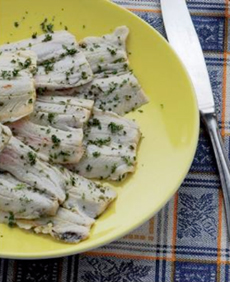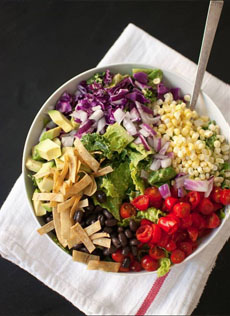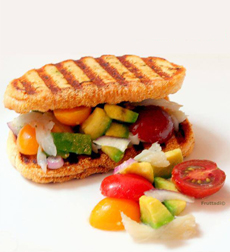Remove from the heat and immediately divide the caramel evenly among the ramekins. Spoon carefully so that the caramel is on the bottom of the ramekins and not on the sides. Set aside.
3. WHISK the eggs, granulated sugar and salt in a bowl. In a medium sauce pan over medium heat, bring the milk to a gentle simmer. Add the vanilla and pour it slowly over the egg-sugar mixture, whisking to blend. Distribute the custard evenly among ramekins.
4. ADD at least 1-1/2 inches of water to the bottom of the roasting pan (this creates a water bath or bain-marie). Place the roasting pan on the middle rack of the oven and bake until they are firm in the center, 45 to 55 minutes. Cool for 30 minutes and refrigerate until ready to serve.
5. RUN run a knife around the top edge of each ramekin and turn the ramekin upside down on a plate. When you unmold, the caramel at the bottom of the ramekin becomes the sauce on top of the custard, running down the sides and pooling on the plate.
NOTE: The pastry chef at the Chocolate Lab did not use ramekins with the caramel at the bottom. Instead, as you can see in the photo above, the crème caramel was baked in bowls with the caramel on top, and was served in the bowl in which it was baked. You can do the same.
WHAT’S THE DIFFERENCE BETWEEN CRÈME CARAMEL, CARAMEL CUSTARD & FLAN?
Flan is the Spanish name for crème caramel, the lightest of the classic French custards. Caramel syrup is poured into the mold or ramekin before adding the custard base.
After the custard is baked, it is unmolded, leaving the caramel sauce on top and pooling around it. In caramel custard, caramelized sugar is mixed into the custard prior to baking.
See the different types of custard in our Custard Glossary.
|





